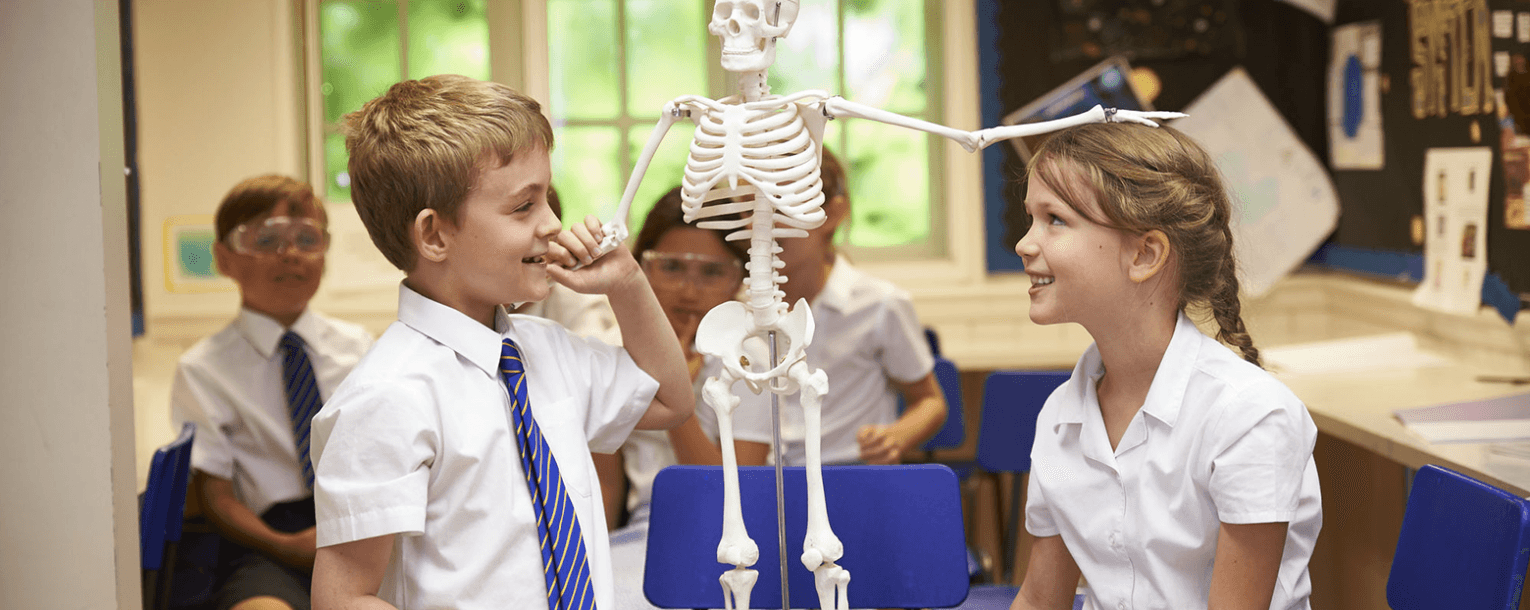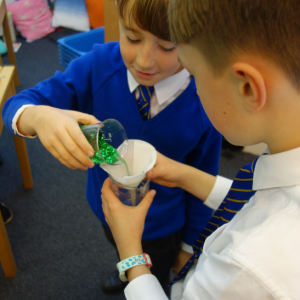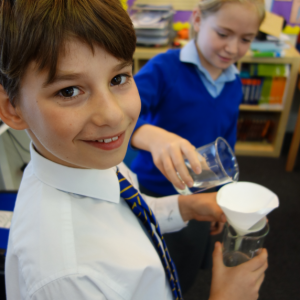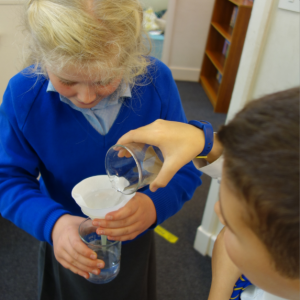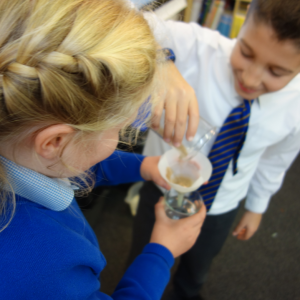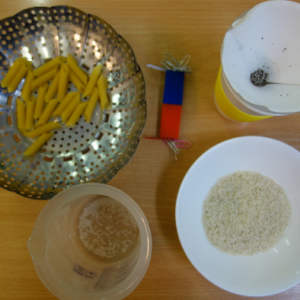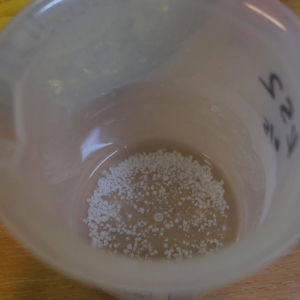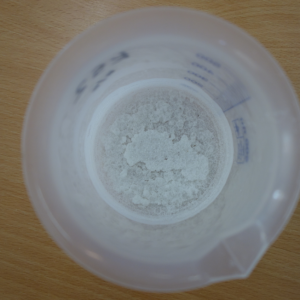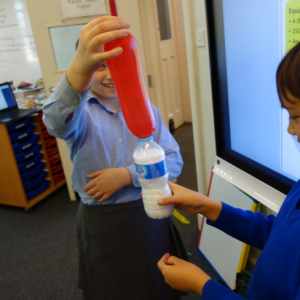Year 5 have had a tremendous time investigating which materials are soluble. We tried dissolving salt, sand and glitter in separate beakers then filtered the mixtures to see which materials were collected by the filter paper. We noted the sand and glitter were not soluble since they were collected in the filter paper but the salt in the salt solution passed through the filter, proving salt is soluble.
Our next challenge was to separate the pasta, rice, sand, salt and paper clips using a variety of objects such as sieves, filters and magnets.
Separating the sand and salt was the most difficult. We dissolved the salt and sand in water because salt is soluble and then filtered the mixture to collect the sand. Finally, we left the salt solution on a radiator so the water would evaporate.
The first photo shows what the salt solution looked like after 24 hours on the radiator. The second photo was taken once all the water had evaporated. We could see the salt clearly at the bottom of the beaker, proving our prediction that dissolving salt is a reversible change.
Our final investigation last week explored what happened when we added bicarbonate of soda to vinegar.
We poured 100ml of vinegar into a water bottle and then poured two teaspoons of bicarbonate of soda into a balloon using a funnel. Next we had to attach the balloon carefully over the top of the bottle and then we lifted the balloon so that the bicarbonate of soda dropped into the vinegar.
You can see in the photo that this caused a dramatic reaction and the balloon captured the carbon dioxide gas that was created, blowing up as more and more gas was created.
